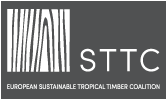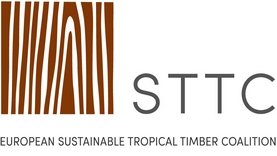Fair&Precious Partners in the spotlight

In the latest of our interviews with Fair&Precious partners, we ask Paolo Bracciano, Managing Director of Regalis, about its business, its outlook and ethos.
How would you describe your business; who you are, what you do and what you stand for?
Regalis is a trading company, specialised in international wood products supply. We source quality hardwoods and softwoods from West and Central Africa, Eastern Europe, Asia and USA. With long experience, we offer verified legal and sustainable wood products to importers and manufacturers worldwide. We engage in constant, regular purchasing programs with our suppliers, to ensure our wood offer is both extensive and available. We support suppliers and often participate in investments with them to further improve and develop their factories’ transformation capacity, to help further develop the local economy and reduce the carbon footprint related to product transport.
Why did you become a Fair&Precious partner?
It gives us the opportunity to help develop market knowledge, especially in those countries not yet familiar with it, of the value of verified legal and sustainable tropical timber.
What do you see as the challenges for tropical timber to retain European market share?
I see more opportunities than challenges. Timber harvested responsibly from well managed forests is the building material of the future.
How important is the European market to the tropical timber industry?
Europe remains the main reference market for tropical timber, especially in terms of wood working practices. It still has a very important role in the development and spread of tropical timber knowledge and of new applications.
In which market or end-product sectors do you see greatest opportunities for sustainable tropical timber?
Regalis has been a pioneer in developing tropical timbers in several markets that were not accustomed to using them. This has taken considerable effort in terms of promotion and training, but has been a success. We see several other potential markets and applications where tropical timber can grow, but only by investing in marketing. In particular, we see potential in areas related to the ‘green building’, both in structural and decorative applications.
Do you see potential for growing market uptake of secondary sustainable tropical timber species?
Regalis has promoted development of lesser known species for some time. It’s not easy, especially in Europe, where the market is strongly attached to its ‘traditional species’. New markets are more open to trying secondary species. But their use will probably increase in the coming years due to the shortage of more commonly used species. They need to be supported with research and application projects to determine their technical, aesthetic and durability characteristics.
What would be your sales pitch for sustainable tropical timber or timber products to a customer?
Thanks to the biodiversity of the tropical forest, you have a wide spectrum of species, all with different technical, durability and appearance characteristics, and they can often be used in their natural state, without the need of preservative treatment chemicals.
Are you optimistic for the future of the sustainable tropical timber sector?
We’re really optimistic about the future. We expect further development of woodworking industries in producer countries, leading to a reduction in the carbon footprint of our trade. And we’re confident the introduction of new forest laws will support sustainable forest management system in the majority of the forests, in turn allowing us to further enhance our tropical timber offer.












